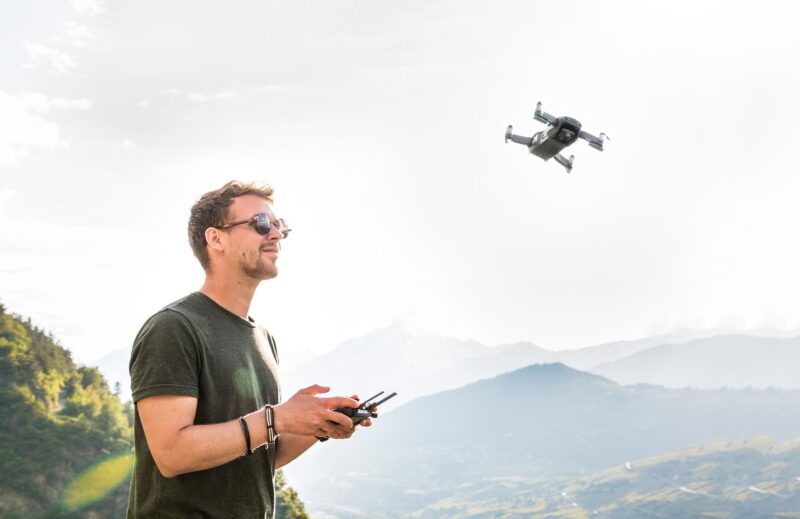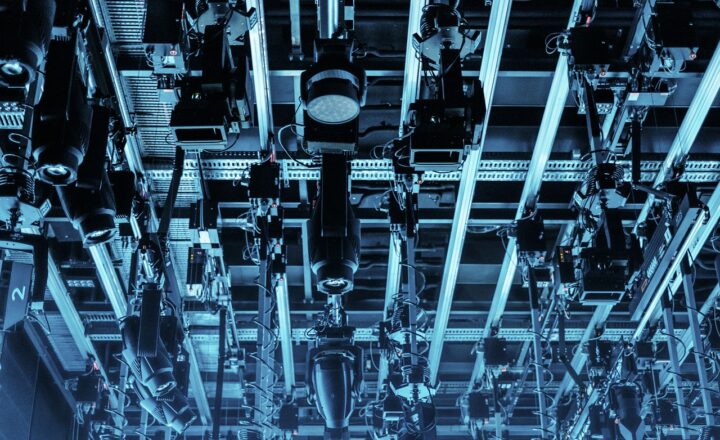Quadcopters Take Flight: How Drones Are Changing the Way We Capture the World Around Us
November 14, 2024

In recent years, quadcopters and drones have transformed the way we capture images and videos of our world. From breathtaking aerial shots of sprawling landscapes to dynamic footage of events, drones have opened up new realms of creativity and utility in photography and videography. But how did we get here, and what does the future hold for this fascinating technology?
1. The Rise of Drones: A Brief History
The journey of drones traces back to military applications in the early 20th century, where they were used for reconnaissance missions and target practice. However, it wasn’t until the early 21st century that advancements in technology made drones accessible to the general public.
In the following years, the introduction of quadcopters—drones with four rotors—became a game changer. They offered greater stability, ease of control, and the ability to perform complex maneuvers. The introduction of high-definition cameras mounted on these drones further increased their popularity.
Today, drones are utilized in various fields, including real estate, filmmaking, agriculture, and even disaster management. Their ability to capture stunning visuals from previously unattainable angles has sparked a revolution in the creative industry.
2. How Drones Are Transforming Photography and Videography
Drones have changed the landscape of photography and videography in several ways:
- Aerial Perspectives: Drones allow photographers and filmmakers to achieve stunning aerial shots that were once limited to helicopter or crane setups, both of which are costly and can be complicated to execute. With a drone, a single operator can achieve cinematic depth and drama in their visuals by capturing sweeping shots over vast terrains.
- Increased Accessibility: With affordable options available on the market, drones have become accessible to hobbyists and professionals alike. Everyone from YouTube creators to professional filmmakers can use drones to enhance their narratives and storytelling.
- Real-Time Capability: Drones equipped with live video transmission technology allow users to see what the drone’s camera sees in real-time. This feature is incredibly beneficial for event coverage, inspections, and monitoring wildlife.
- Innovative Creative Options: From the popular “drone selfie” to intricate flight paths that create stunning visual sequences, creativity is bounded only by the drone operator’s imagination. Techniques like the “fly-through” create immersive experiences by layering imagery from multiple angles and movements.
With these advantages, drones have become essential tools in various sectors, from marketing and tourism to wildlife photography and search-and-rescue missions.
3. The Best Drones for Aerial Photography
Choosing the right drone is crucial for capturing stunning visuals. Here are some of the best drones currently available for photographers and videographers:
- DJI Mavic Air 2: This compact drone is known for its excellent camera quality and impressive flight time. With a 48MP camera and 4K video capabilities, it provides high-quality outputs for both amateurs and professionals.
- Autel Robotics EVO Lite+: Equipped with a large sensor for low-light performance, this drone captures stunning shots even in challenging lighting. The 6K video capabilities and adjustable aperture make it a top choice for serious filmmakers.
- DJI Phantom 4 Pro V2.0: A stalwart in the drone community, the Phantom 4 Pro is known for its reliability and high quality. It features a one-inch 20MP sensor and 4K video at 60fps, making it ideal for professional applications.
- Parrot Anafi: A lightweight and compact drone, the Anafi features a unique 180° tilt gimbal, allowing for unique angle shots. With its 4K HDR camera and affordability, it’s perfect for travelers and hobbyists.
Each drone has its unique features catering to different needs and skill levels. Choosing the right one can make a significant difference in the quality of capture you achieve.
4. Legal Considerations and Safety Tips for Drone Usage
Before taking to the skies, it’s essential to understand the legal landscape governing drone use:
- Register Your Drone: In many countries, you are required to register your drone with the relevant authorities, especially if it exceeds a certain weight. Be sure to check your local regulations.
- Adhere to No-Fly Zones: Certain areas—like airports, military bases, and national parks—are prohibited for drone flights. Familiarize yourself with these zones to avoid hefty fines.
- Maintain Line of Sight: Most regulations require pilots to maintain visual line of sight with their drones at all times. This ensures safety and helps prevent accidents.
- Be Aware of Weather Conditions: Drones are sensitive to wind, rain, and other weather conditions. Always check the forecast before flying to avoid equipment damage or loss.
Safety should be a top priority when operating a drone. Understanding regulations and adhering to safe practices will ensure a smooth flying experience.
5. The Future of Drone Technology: Innovations on the Horizon
The advancements in drone technology are far from over. The future holds exciting possibilities that promise to make drones even more integral to our daily lives:
- AI Integration: As artificial intelligence evolves, we can expect drones to become smarter. This includes advanced object recognition, automated flight planning, and increased autonomous capabilities for various applications, from agriculture to search and rescue.
- Longer Battery Life: Manufacturers are constantly innovating to provide drones with longer flight times to extend their usability and effectiveness, especially in commercial applications.
- Swarm Technology: Futuristic applications are exploring drone swarms—where multiple drones can work together symbiotically for cinematography or agricultural tasks, and even emergency situations.
- Regulatory Changes: As drone technology becomes more habitual within society, we can expect more streamlined regulations to accommodate new uses, such as drone deliveries and urban air mobility.
While these innovations are still in development, they signal a promising future for how we harness drone technology to enhance our capabilities as creators, consumers, and citizens.
Conclusion
The advent of drones has revolutionized the world of photography and videography, offering unprecedented opportunities to capture stunning imagery while expanding our creative horizons. As drone technology continues to evolve, it’s clear that the possibilities are endless. By understanding the historical context, embracing new innovations, and participating responsibly in the drone community, photographers and videographers can unleash their full creative potential. As quadcopters take flight, they invite us to explore the world from new heights, offering fresh perspectives and endless inspiration.
Whether you’re a seasoned professional or an enthusiastic newcomer, now is the perfect time to embrace drone photography and videography—because the sky is truly the limit.








